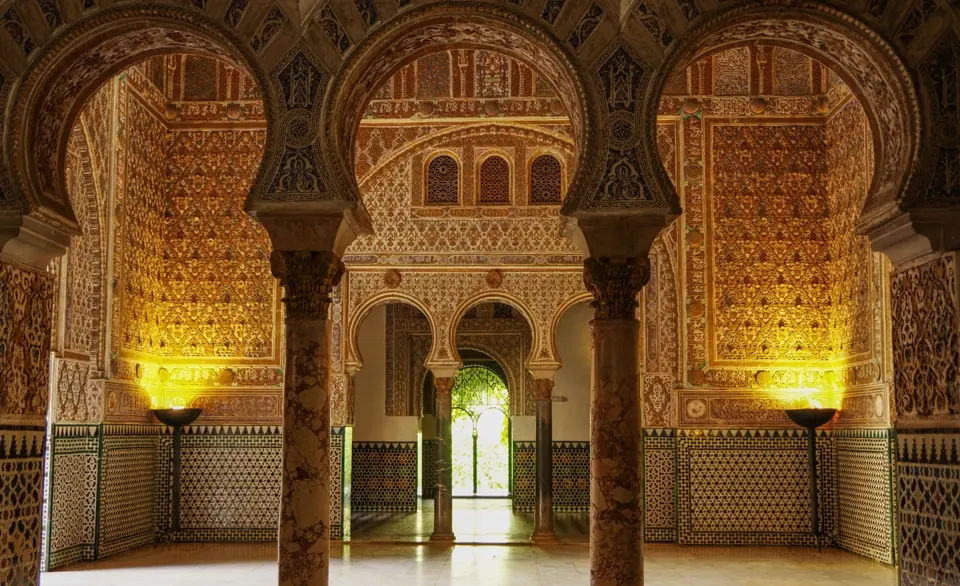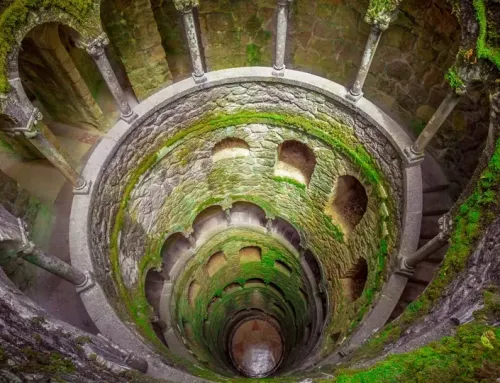The top ten gems of Mudéjar art in Spain
Mudejar art is one of the Iberian Peninsula’s greatest treasures. Born from the centuries-long coexistence of Christian, Muslim and Jewish cultures, it is a fascinating fusion of Islamic forms with Christian materials and techniques. In Spain, its traces can be found in monuments that look like something out of a fairy tale.
Expect tiles, plasterwork, sculpted bricks and domes that will take your breath away.
Here is our top ten list of Mudejar gems that are worth a leisurely visit. Yes, some are in the guidebooks, but many are hidden gems that you will only discover if someone tells you about them.
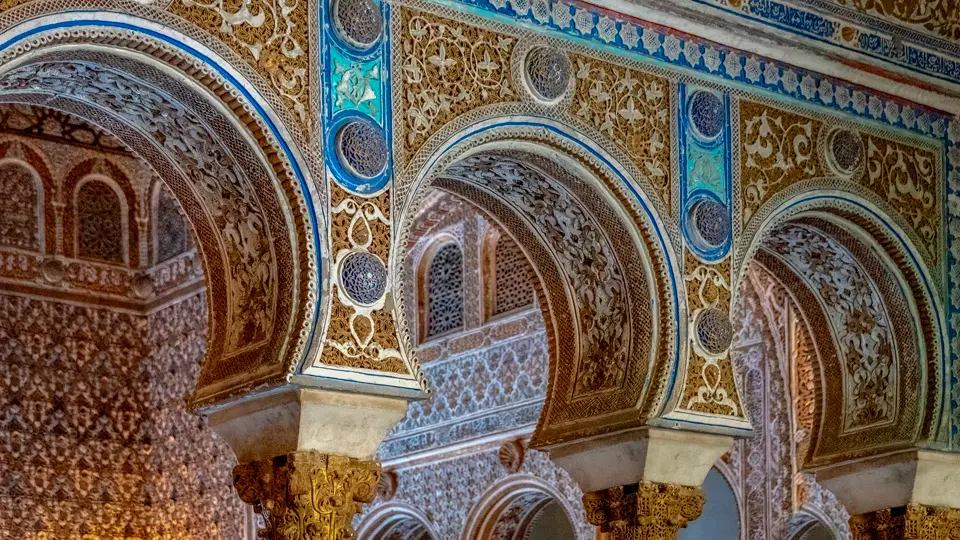
1. THE CATHEDRAL OF SANTA MARÍA IN TERUEL
If you could only visit one place to understand Mudéjar art, make it this one. The cathedral is not just beautiful; it is spectacular. Even from the outside, the tower gives you a hint with its brickwork, glazed ceramics and geometric shapes.
But it’s when you step inside that you’re truly taken aback. The 13th-century painted wooden ceiling is like a sky dome, adorned with scenes from medieval life. Warriors, musicians and fantastic animals… It’s as if you’ve opened an illustrated book from 800 years ago. Did you know that it was made entirely without nails? Just lace, balance and craftsmanship. It’s a well-kept secret until you’re there and look up.
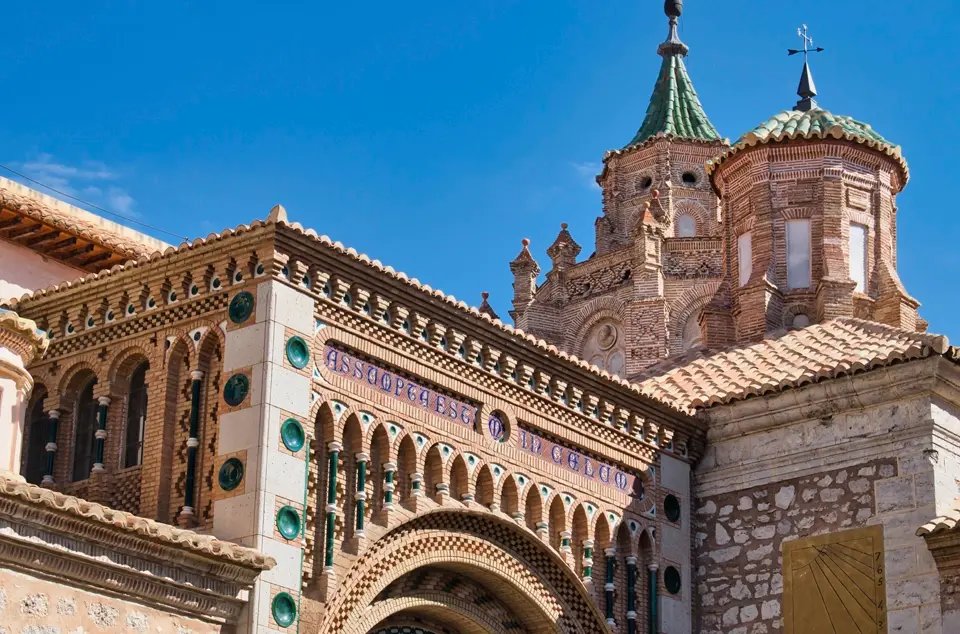
2. ALJAFERÍA PALACE, ZARAGOZA
They say that palaces hold secrets, and this one has centuries of them. Built by the Taifa kings in the 11th century, the Aljafería was later transformed into a royal residence by the Catholic Monarchs. It is a delightful mix of lobed arches, interior gardens and carved wooden ceilings, not to mention the golden calm that only Islamic courtyards possess.

Inside is one of the finest examples of Mudéjar palace architecture: the Throne Room. Imagine the nobles planning conquests here, surrounded by walls that resemble lace made of plaster. Today, it is the seat of the Aragonese Parliament.
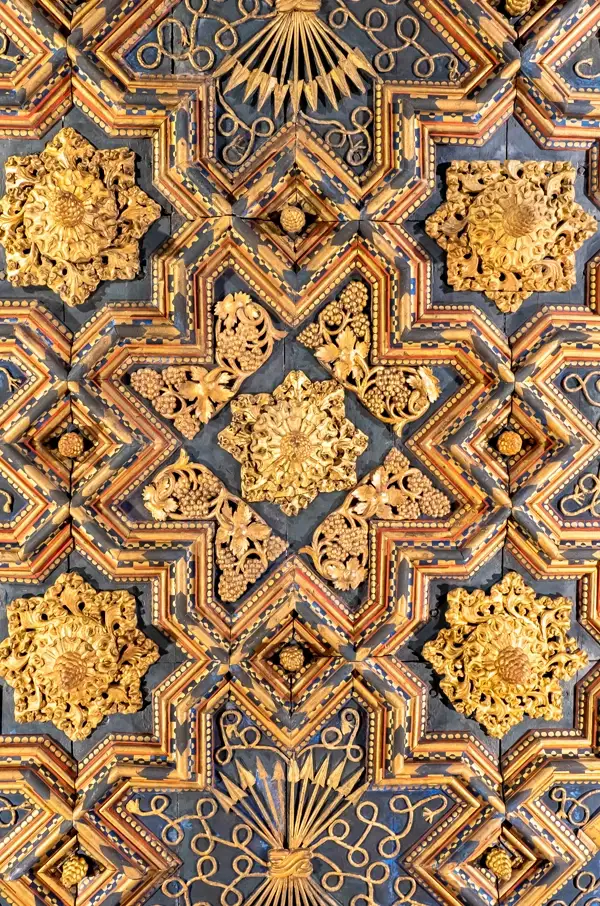

3. COLLEGIATE CHURCH OF CALATAYUD, ARAGÓN
The tower of the Collegiate Church of Santa María la Mayor is a structure that will remain etched in your memory. Towering and elegant, it is covered in green and white glazed ceramics that shine in the sun. It is slightly inclined — yes, like a distant cousin of the Tower of Pisa — which gives it even more character.
The geometric decoration is hypnotic, and the interior is equally impressive, with its altarpieces, plasterwork and charming cloister. Calatayud has many charming corners, but this collegiate church is the jewel that defines the city.
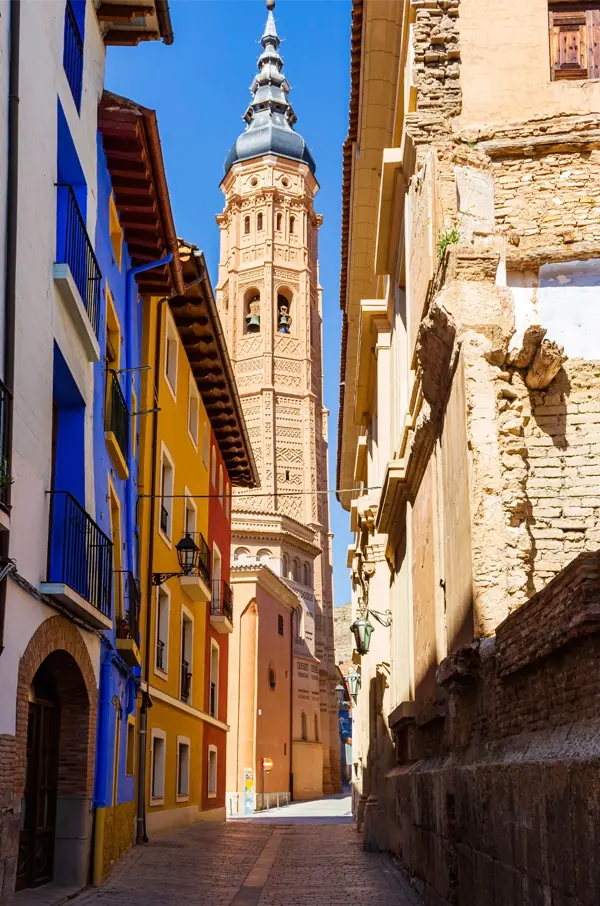
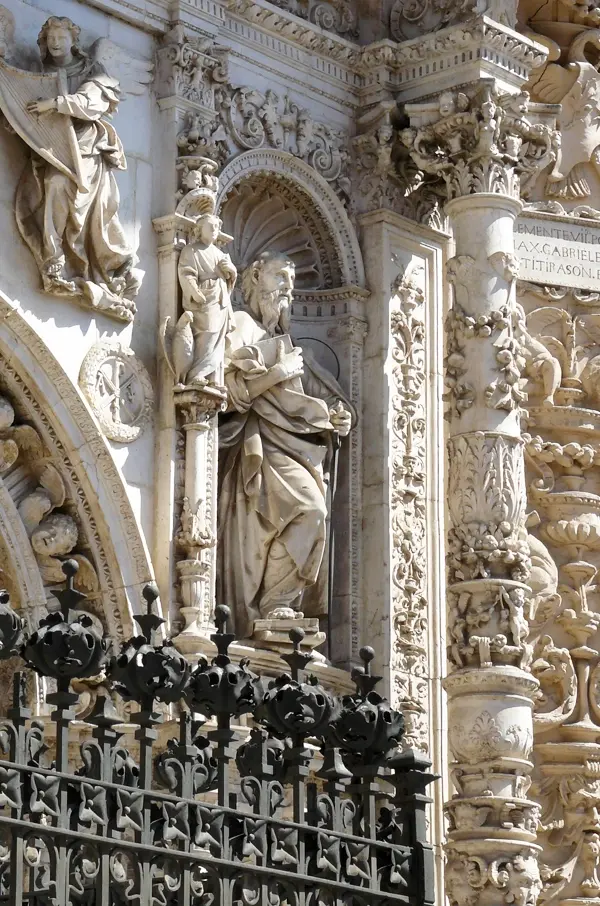
4. SANTA MARÍA LA BLANCA, TOLEDO
It’s hard not to fall in love with this place. Built as a synagogue in the 12th century, Santa María La Blanca is an explosion of white light and horseshoe arches that seem to float. When you visit, you realise that silence is part of the experience.
Its Mudejar style blends Islamic techniques with Jewish functionality and Christian uses. A jewel of cultural coexistence, it was later converted into a church. The most striking thing? The feeling of harmony. Nothing is out of place. Everything flows. It is a peaceful space that has survived centuries of history.
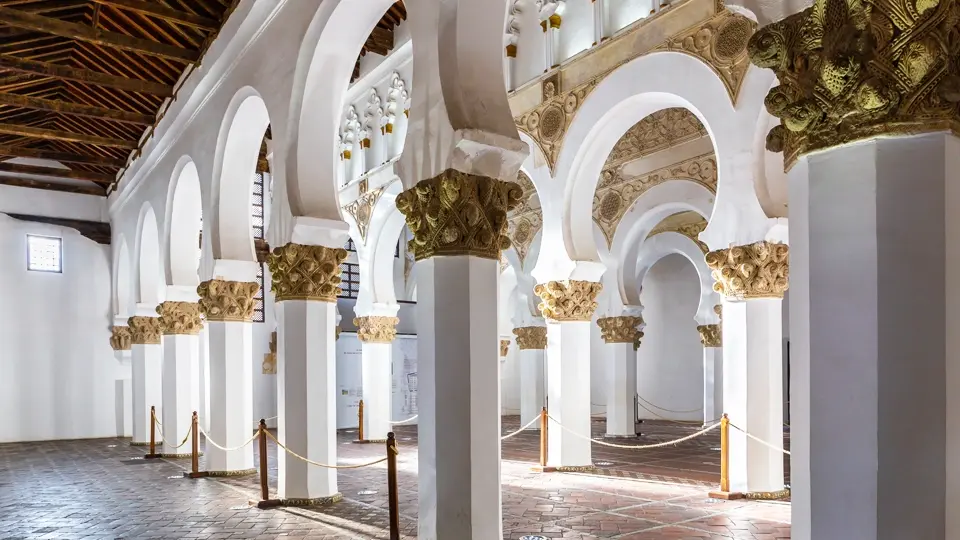
5. THE SYNAGOGUE OF EL TRÁNSITO IN TOLEDO
Entering this synagogue is like entering a jeweller’s workshop. Its Mudejar plasterwork covers entire walls, adorned with Hebrew inscriptions, plants, and geometric shapes in perfect balance.
Built by Samuel ha-Leví, treasurer to Peter I, it reflects the splendour of Toledo’s Jewish community in the 14th century. Today, the building houses the Sephardic Museum, but it is the space itself that moves visitors beyond the display cases.
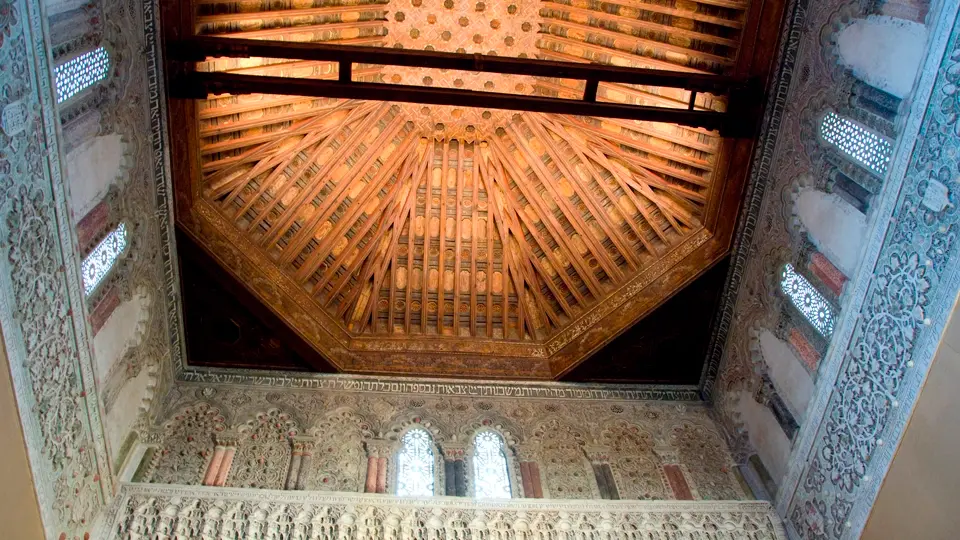
6. THE CHURCH OF SANTA MARÍA IN ALAEJOS, VALLADOLID
This 16th century Neo-Mudejar jewel is a National Historic-Artistic Monument. Its brick tower, which is approximately 64 metres high, is topped by a delicate spire that is reminiscent of a minaret. Inside, the hall is divided into three equal-height naves, covered with golden, polychrome, ribbed vaults. Two Mudejar-Renaissance trusses — one in the centre of the transept and one in the main chapel — add texture and warmth to the space.
The highlight is undoubtedly the octagonal, coffered, gilded-wood ceiling above the main chapel, which seems to hold up a miniature sky. The church also houses a small parish museum containing sculptures, gold and silverwork, and two paintings by Luca Giordano, providing a captivating blend of art, devotion and cultural heritage.

7. REALES ALCÁZARES, SEVILLE
Game of Thrones? Yes, Dorne was filmed here. But even if you’re not a fan, the Alcázares will leave you speechless. The Palace of Pedro I is a masterpiece of Mudejar art.
Every room is a masterpiece, with walls adorned with tiles and carved wooden ceilings, and courtyards that blend Islamic and Gothic styles in a magical way. The Patio de las Doncellas (Courtyard of the Maidens) and the Salón de Embajadores (Ambassadors’ Hall) offer more than just architecture; they provide a multi-sensory experience. And, yes, the scent of orange trees accompanies and intoxicates visitors.
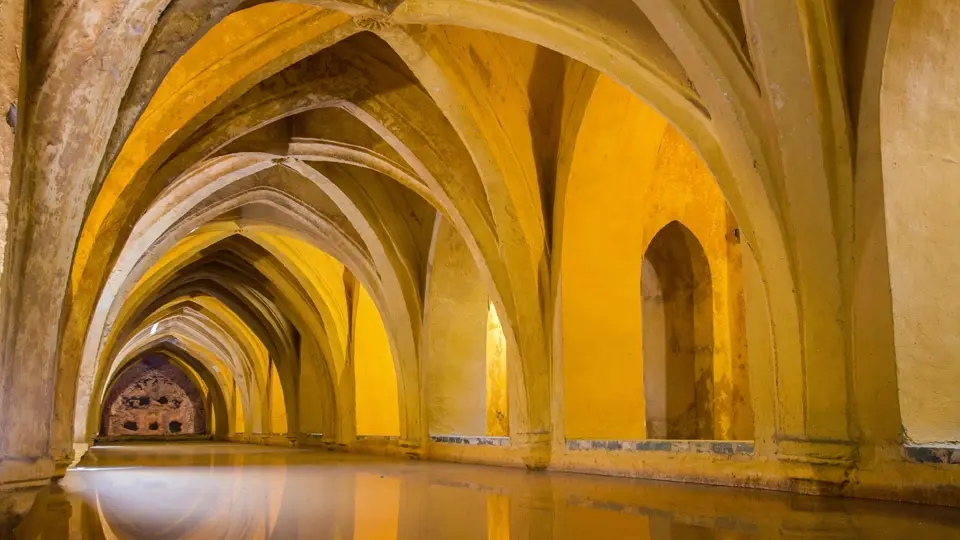
8. SAN TIRSO, SAHAGÚN
If you’re travelling along the Camino de Santiago, take a break here. Sahagún is a small town with a rich heritage. San Tirso is one of the first churches to incorporate Mudejar art into a Romanesque structure.
It features blind arches and the use of brick, as well as a simple layout. Everything has a primitive yet sophisticated air. It’s as if Mudejar art were trying on its first outfit.
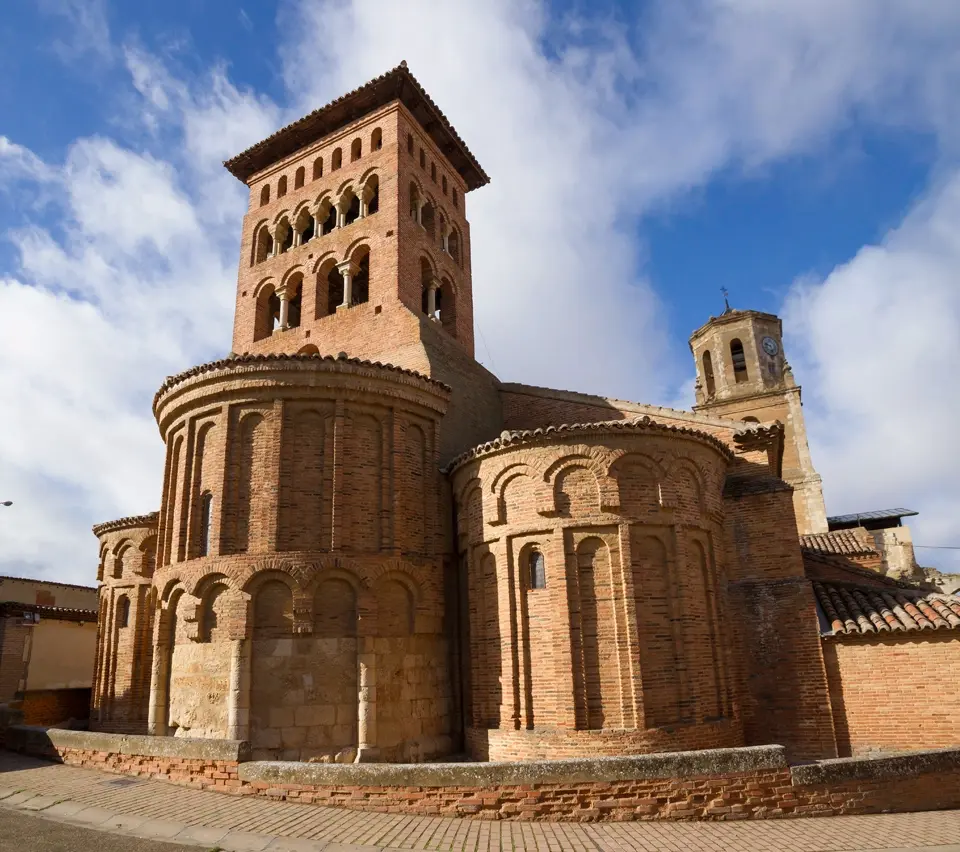
9. CHAPEL OF SAN BARTOLOMÉ, CÓRDOBA
Hidden among Córdoba’s courtyards and narrow streets, the Chapel of San Bartolomé is one of those places you stumble upon by chance and never forget.
Built in the 14th century, it combines Gothic elements with the most delicate Mudejar decorations. The plasterwork and tiles remain intact, creating an aura of contemplation. As it is located inside the Faculty of Philosophy, many people are unaware of its existence.
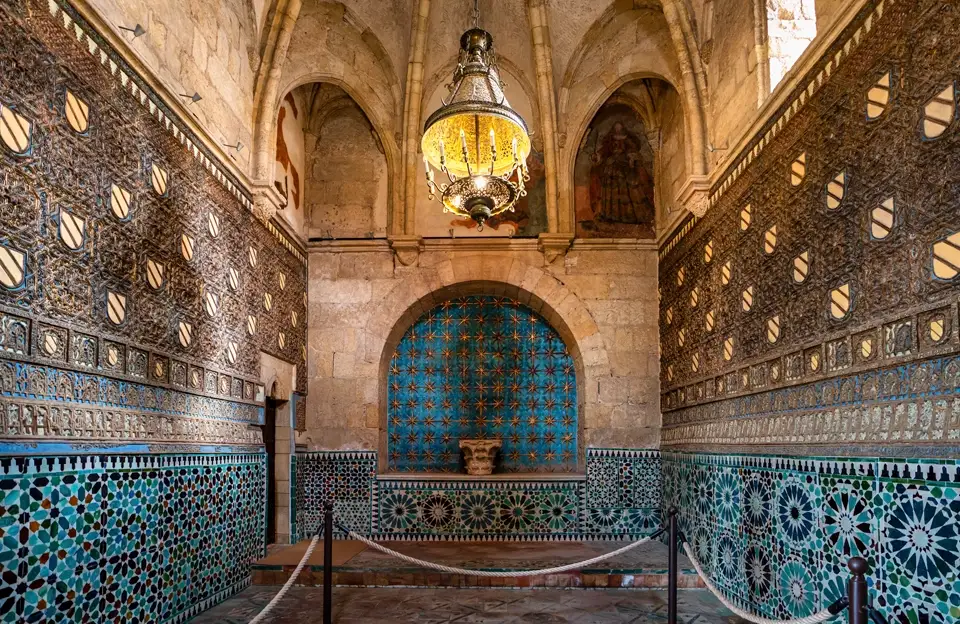
10. SYNAGOGUE OF CÓRDOBA
It is small, but its value is incalculable. It is one of only three medieval synagogues still standing in Spain. It boasts Mudejar plasterwork, Hebrew inscriptions and a sense of balance. All within just a few square metres.
Located in the heart of the Jewish Quarter, it is an essential stop for anyone wishing to connect with Sephardic history. It is a place where the walls still echo with prayers and where art served as a bridge between worlds.
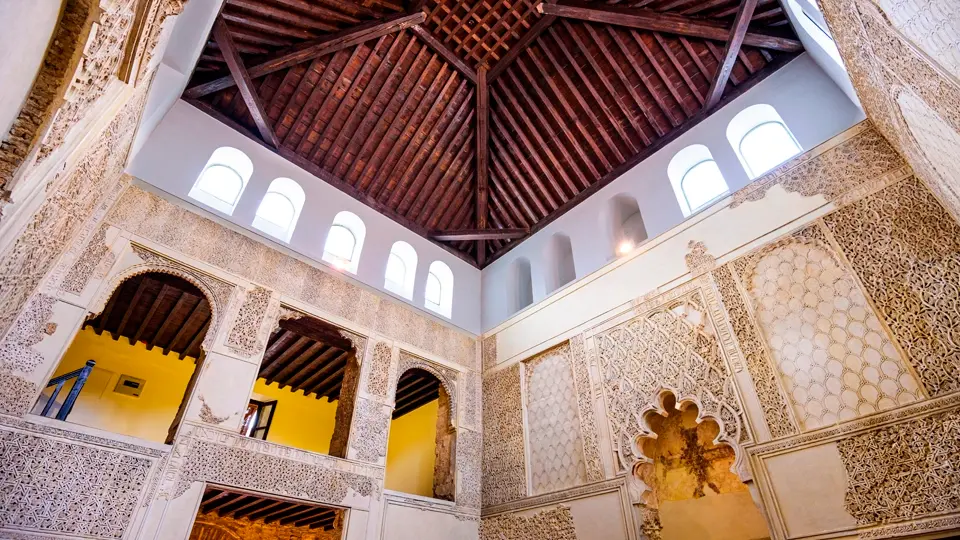
ARE YOU READY TO EXPLORE MUDÉJAR ART?
Spain proudly preserves these wonders, and the good news is that many of them are not overcrowded. If you are passionate about art, history or the quiet beauty of authenticity, these Mudejar gems will leave a lasting impression.
At Carameltrail, we design personalised trips tailored to your desired experience. Choose from historical routes through Jewish Spain, tours of the Andalusian legacy, or cultural getaways in Aragon or Castile.
Our local team will accompany you before and throughout your trip, providing expert guidance and sharing their passion and knowledge of every corner of the country.
Carameltrail is your local luxury travel agency in Spain, Portugal and Morocco. And these Mudejar gems are just the beginning.
